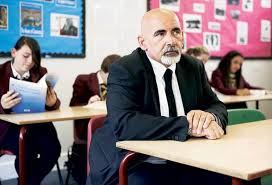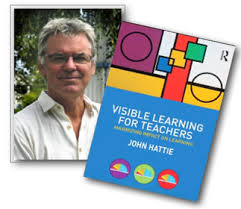
This is something that was mentioned at the pedagogy lunchtime meeting. A method of note taking. Helen Mark kindly put me onto this video explaining the process.
Monthly Archives: October 2014
Professional Enquiry – The Process
Step 1 – Problem Identification
Why do you want to do study this topic?
Is the problem broad enough to allow for a range of insights and findings? Is it narrow enough to be manageable?
Step 2 – Plan of Action
Will you develop and implement a new strategy or approach to address your question?
What data do you need to learn about your question?
Step 3 – Data Collection
What, why, when, where, and how will you collect your data?
How will you ensure that you have multiple perspectives?
Step 4 – Analysis of Data
What can you learn from the data?
What patterns, insights, and new understandings can you find?
Step 5 – Plan for Future Action
What will you do differently in your classroom as a result of this study?
How will you write about what you have learned so that the findings will be useful to you and to others?
Step 1: Problem Identification
To begin the action research process, identify the focus.
Determine the area of teaching and learning that you want to explore. The focus should be on an area over which you have some control and you would like to change or improve.
Describe the situation you want to change.
Why do you want to change it?
What specifically would you like to try?
Identify the questions that need to be answered.
Starting points-
I would really like to improve…
I am perplexed by…
Some people are unhappy about…
I’m curious about…
I want to learn more about…
An idea I would like to try out in my class is…
Something I think would really make a difference is…
Something I would like to do to change is…
Some areas I am particularly interested in are…
Guidelines for Developing a Question-
One that hasn’t already been answered
Higher level questions which get at explanations, reasons, relationships
Not yes-no
Everyday language, avoid jargon
Not too lengthy, concise
Manageable, doable in the context of your work
Follow your passion, meaningful
Keep close to your practice and provides opportunity to stretch
Question leads to other questions
Example:
Area of Focus: Reading
Question: How will using technology improve student’s reading vocabulary?
Area of Focus: Parental Involvement
Question: What strategies will result in more parents attending parent-teacher conferences?
Step 2: Organizing a Plan of Action / Step 3: Collect the Data
* Will you develop and implement a new strategy or approach to address your question? Is there a new curriculum , instructional strategy you are interested in? Have you implemented a change and you want to document results?
* What data do you need to learn about your question? Data collection is the gathering of information to answer the research question. Data may be collected from a variety of sources. Using more than one source will increase the credibility of any conclusions.
Triangulation-
Just as a stool is most solid sitting on a foundation of 3 legs, your data will be more solid if you collect it from more than one source, at more than one
point in time. Any combination of the below:
3 Different Methods: breadth, depth, corroboration
Breadth; questionnaire, survey
Depth: interview
Corroboration: observations, checklists, artifacts, videotapes
3 Different Perspectives: you, students, other staff, parents
3 Different Time Periods: autumn, winter, spring
Data sources may include:
Test results
Observations
Surveys
Interview
Student records
Portfolios
Videos
Artifacts
Journals
Shadowing
Checklists
Step 4: Organize and Analyze the Data
Make sense of the drawer full of data to answer the question “so what?”.
1. Organize using webs, graphs, charts, numbers etc.
*Sort
*Sift
*Discard
*Catalogue
2. Make observations about the data. Non-judgmental statements of facts.
*Search for themes and patterns
*Ask questions
*Look for gaps
*Display the data
3. Interpret and summarize and describe the findings.
4. Share the results.
Step 5: Plan for Future Action
Now that you have analyzed your data…
* What have you learned?
* How do you feel about what you have learned?
* How do your conclusions differ from what you thought you would learn?
* Do the conclusions seem believable?
* What actions might you take based on your conclusions?
* What new questions emerge for you from the data?
* Who else might be interested in these conclusions?
* What are strategies to share your conclusions with others?
Building Learning Power – Guy Claxton
The new S1 PSE course is based on a lot of work carried out by Professor Guy Claxton. If you would like to know more, have a look at the following presenatation and video.
Dylan Wiliam on Feedback

The feedback was why we started really, because a lot of the research on formative assessment was about different kinds of feedback… and what we found was that most of the feedback that’s come in schools is the least helpful in terms of what psychologists have found. There’s lots of different ways of looking at feedback, but a very important way of looking at feedback is whether its ego involving or task involving.
So if you say to students that they did very well that they did one of the best pieces of work in the class, that’s ego involving because it focuses on that person’s position in the class. Whereas, if you get feedback that’s says things like, well this is what you need to do to improve… then that focuses on the task. And what the research shows very clearly is that ego involving feedback is rarely effective and, in fact, can lower achievement. So when students get grades and they can compare themselves with each other, where they get praise…the effects are usually or often zero and, sometimes, negative. In other words, in many cases rather than giving that kind of praise you would have been better off shutting up and giving no feedback at all! Students given that kind of praise do less well than students given no feedback at all.
But what the research also shows very clearly is the conditions under which feedback is successful. The research shows, for example, that when the feedback focuses on what students need to do to improve, and, in particular, how to go about it… then you get very large impacts on student achievement. So the challenge for teachers is to take these very broad principals that I’ve outlined and work out what it means to their own classroom.
The way I summarise all of this is to say that I think that good feedback causes thinking. The really important thing is that when a student gets a piece of feedback, the first thing they do is think, not react emotionally, not disengage but think. That’s very important because what the research on student motivation shows is that when they’re faced with a task or a response to a piece of work, students, basically, make a choice between deciding either to protect their wellbeing or to engage in activities that will actually help them grow as individuals and in their achievement. And if the first reaction of a student is to protect themselves and to restore their sense of well-being, what you will find is that students will focus on the things that will do that for them and they won’t focus on the learning.
So what we need to do is to give students feedback that helps them move forward. Give them feedback that makes it clear that ability is incremental rather than fixed, because if we send the message to students that ability is fixed then if you are confident that you can engage in the task you will go for it, for the brownie points. But if you’re not confident or think that you might actually fail when other people will succeed, you will disengage and basically, you will decide that you would rather be thought lazy than stupid.



